

Paul Farmer: Investigating the root causes of the global health crisis. Physician and anthropologist Paul Farmer, who co-founded Partners in Health, comments on the new TED Book, “The Upstream Doctors.” By Paul Farmer At the end of almost a decade spent in teaching hospitals and clinics, most (we hope all) physicians have honed their clinical acumen by focusing on the care of the patient who is right in front of them.
Dan Pink: The puzzle of motivation. How an Entirely New, Autistic Way of Thinking Powers Silicon Valley. Book excerpt by Temple Grandin and Richard Panek I’ve given a great deal of thought to the topic of different ways of thinking.
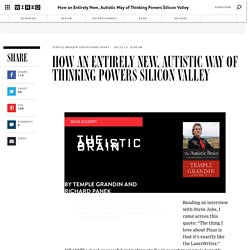
In fact, my pursuit of this topic has led me to propose a new category of thinker in addition to the traditional visual and verbal: pattern thinkers. Reading an interview with Steve Jobs, I came across this quote: “The thing I love about Pixar is that it’s exactly like the LaserWriter.” Metaphorical Analysis. “There is an interesting dance here, in that data (observations, equations, structural formulas, spectra) are useless without the narrative, theoretical framework to make a story out of them.”
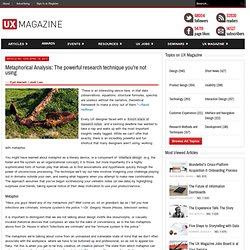
—Raold Hoffman Every UX designer faced with a 6-inch stack of research notes and a looming deadline has wanted to take a nap and wake up with the most important insights neatly tagged. While we can’t offer that exactly, there is an incredibly powerful and fun shortcut that many designers aren’t using: working with metaphor. You might have learned about metaphor as a literary device, or a component of interface design (e.g. the folder and file system as an organizational concept); it is those, but more importantly it’s a highly sophisticated form of human play that allows us to find associations and hypotheses quickly through the power of unconscious processing.
How Bayes’ Rule Can Make You A Better Thinker. Simple Strong Password Generator. The CfA Accelerator: Disruption as a Public Service. What is unique about the CfA Accelerator?
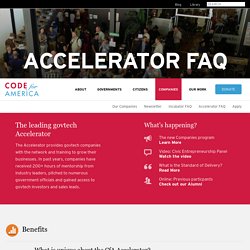
The CfA Accelerator focuses on the govtech space – that is, government, community, and the interaction between the two. Increasingly the way in which we engage with government is channeled through technology, which means there's a tremendous opportunity for entrepreneurs to build new, successful, and profitable companies that make the experience more like the consumer web. The CfA Accelerator aims to help early-stage govtech companies get the financial, strategic, and operational support they need to succeed.
See self-assembly and 4D printing in action. A part on the outside of a spaceship that morphs, rather than requiring an astronaut to perform a risky maneuver.
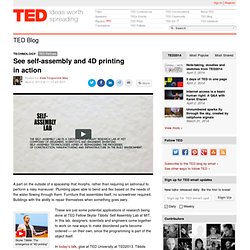
Plumbing pipes able to bend and flex based on the needs of the water flowing through them. Furniture that assembles itself, no screwdriver required. Buildings with the ability to repair themselves when something goes awry. Skylar Tibbits: The emergence of "4D printing"These are just some potential applications of research being done at TED Fellow Skylar Tibbits’ Self Assembly Lab at MIT. In this lab, designers, scientists and engineers come together to work on new ways to make disordered parts become ordered — on their own, since the programming is part of the object itself. TED: Ideas worth spreading. DIY smart materials.
Why Scoopit Is Becoming An Indispensable Learning Tool. Leanna Johnson, Learning with Technology Scoop.it collates work from online publications using an online magazine format, and this visual impact alone makes it very effective.

The additional appeal of broadcasting from a hub allows me to tap into and share with my ed tech networks, which is why I find myself using it more often during time constraints. First of all, it’s powerful–it incorporates multiple elements of familiar social media tools. But it’s also very flexible–the mobile app is quite functional for both iPhone and Android, and a toolbar plugin can be installed on browser windows.
Scoop.it’s athleticism makes it a time-saver; educators and students will quickly grasp its value in content gathering. Additionally, using Scoop.it will meet multiple standards (Common Core and NETS-S) across the curriculum. Curation is a valuable skill for today’s learner. Using Scoop.it on a mobile device makes it a constrained platform, which lessens stress. Toward Digital Collaboration Fluency. As I reflect upon some of my recent experiences in MOOCs (most recently #ETMOOC and #EDCMOOC) and online communities (especially my recent participation in #COOPLIT), I find myself thinking about the notion of digital collaboration and the pursuit of digital collaboration fluency.
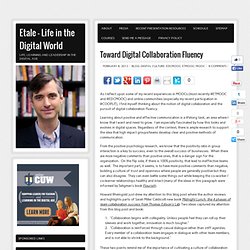
Learning about positive and effective communication is a lifelong task, an area where I know that I want and need to grow. I am especially fascinated by how this looks and evolves in digital spaces. Regardless of the context, there is ample research to support the idea that high impact groups/teams develop clear and positive methods of communication. From the positive psychology research, we know that the positivity ratio in group interaction is a key to success, even to the overall success of businesses. When there are more negative comments than positive ones, that is a danger sign for the organization. 4achange. Netcococo.png (PNG Image, 952???442 pixels)